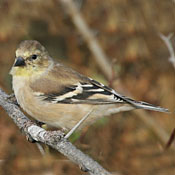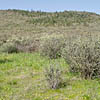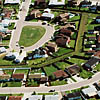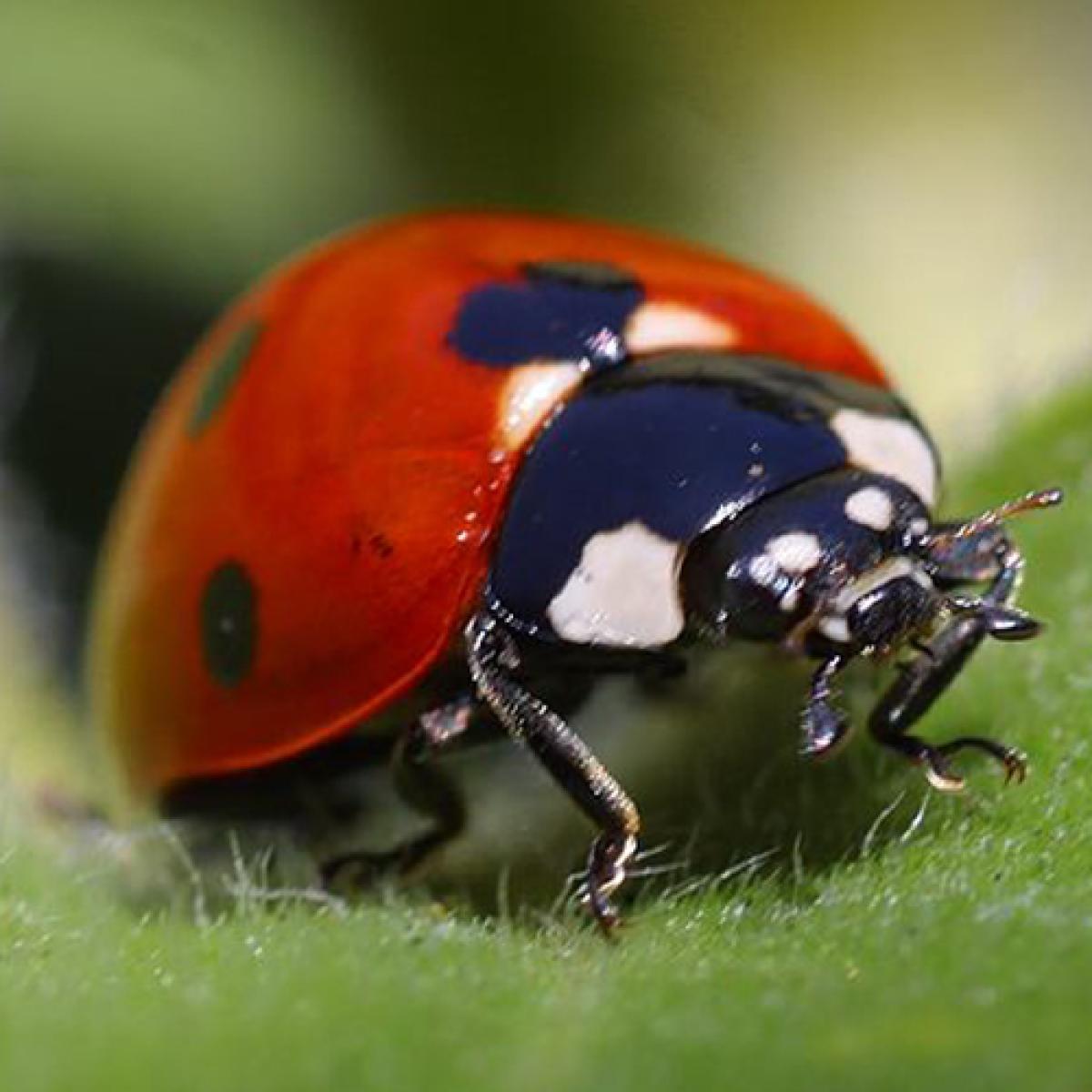American Goldfinch
Spinus tristis

Perching
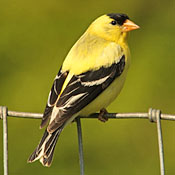
Length: 5 in. (13 cm )
Although uncommon in lowland desert areas, it is otherwise common throughout most of its range. This perky species occupies weedy fields, open brushy areas and forest edges where it often hangs from vegetation gleaning small seeds from branch tips and thistle heads. It feeds the young a liquid seed pulp and an occasional insect. During the winter this species usually travels in small to large flocks, often associated with other seed-eating species, such as Lesser Goldfinches and Pine Siskins. The small, cup-like nest is tightly woven with plant down and other vegetation and placed in the fork of a branch in a bush or tree at low to mid levels.
The four-digit banding code is AMGO.
Bibliographic details:
- Article: American Goldfinch
- Author(s): Dr. Biology
- Publisher: Arizona State University School of Life Sciences Ask A Biologist
- Site name: ASU - Ask A Biologist
- Date published: 13 Jul, 2017
- Date accessed: 31 July, 2025
- Link: https://askabiologist.asu.edu/activities/bird/american-goldfinch
APA Style
Dr. Biology. (Thu, 07/13/2017 - 15:38). American Goldfinch. ASU - Ask A Biologist. Retrieved from https://askabiologist.asu.edu/activities/bird/american-goldfinch
Chicago Manual of Style
Dr. Biology. "American Goldfinch". ASU - Ask A Biologist. 13 Jul 2017. https://askabiologist.asu.edu/activities/bird/american-goldfinch
MLA 2017 Style
Dr. Biology. "American Goldfinch". ASU - Ask A Biologist. 13 Jul 2017. ASU - Ask A Biologist, Web. https://askabiologist.asu.edu/activities/bird/american-goldfinch
Be Part of
Ask A Biologist
By volunteering, or simply sending us feedback on the site. Scientists, teachers, writers, illustrators, and translators are all important to the program. If you are interested in helping with the website we have a Volunteers page to get the process started.



